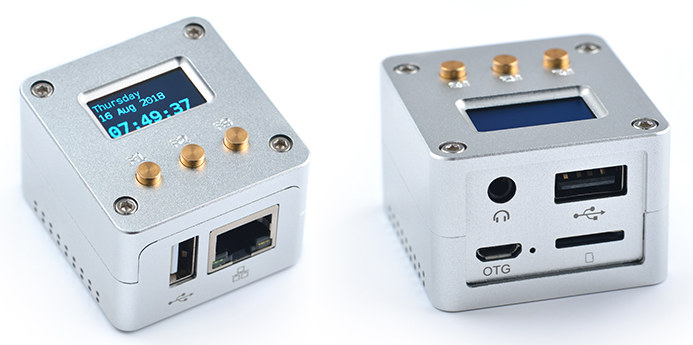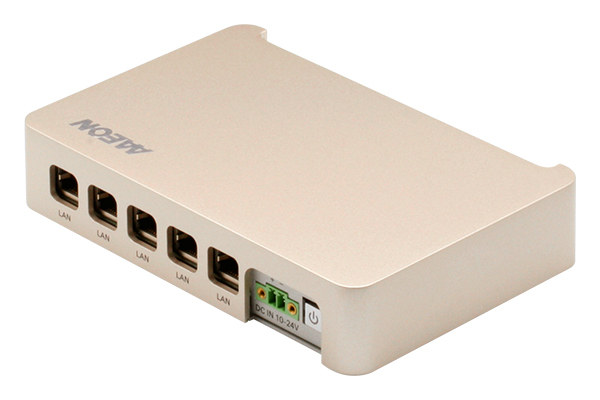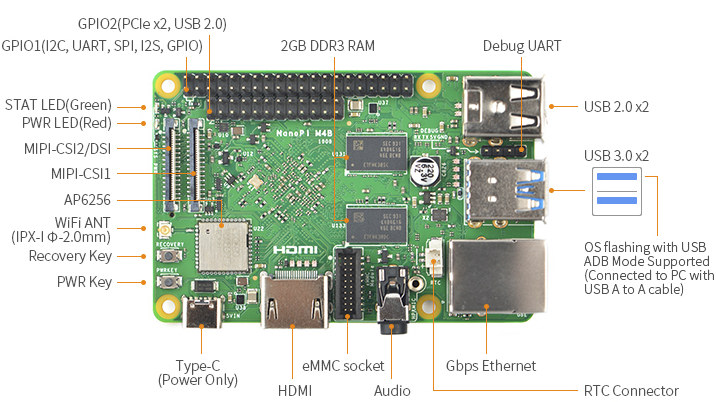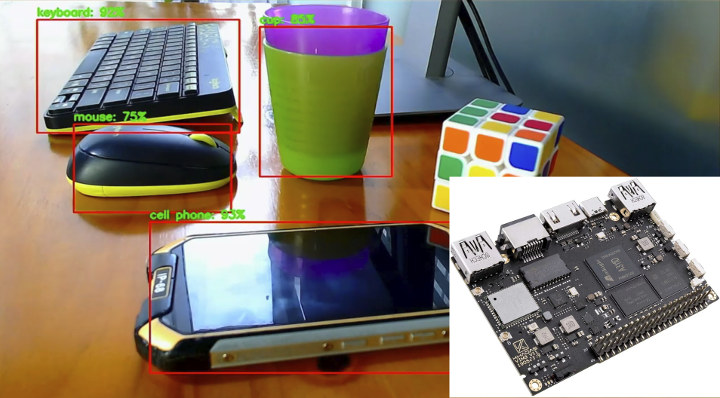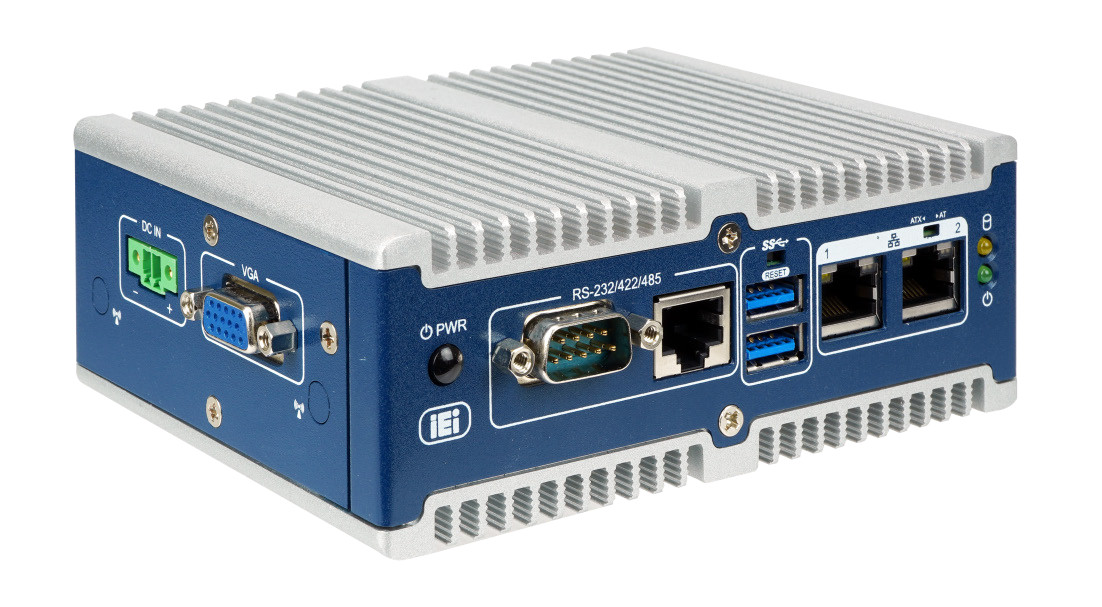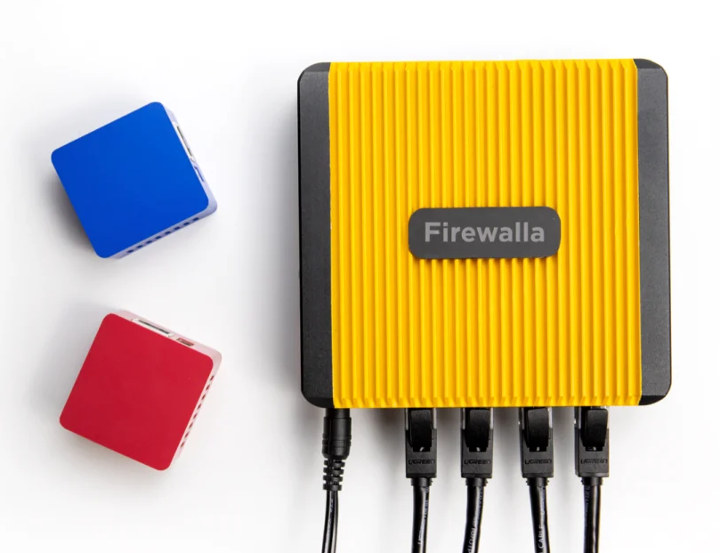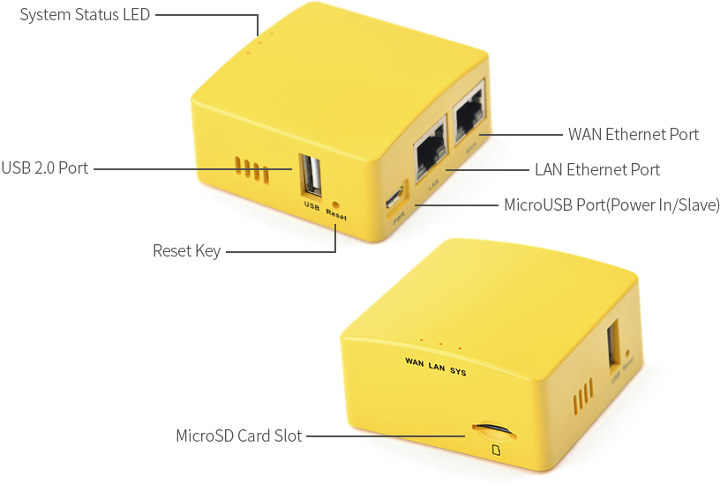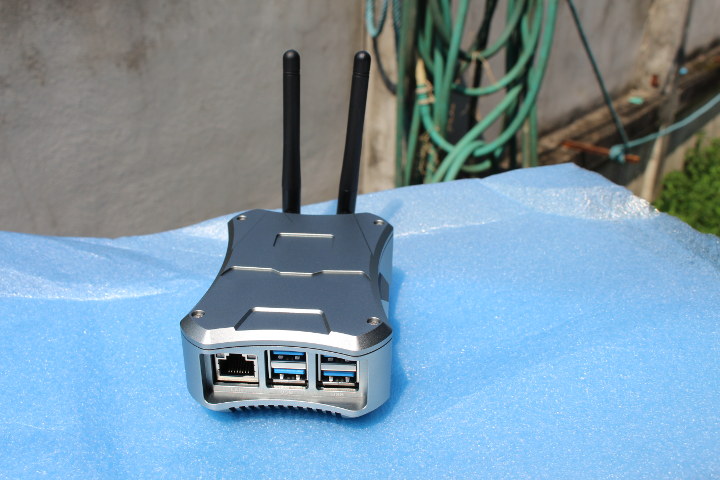NanoPi NEO2 Black is an Allwinner H5 SBC designed for headless applications that improves on the existing NanoPi NEO2 board by adding an eMMC flash module support, and higher memory capacity (up to 1GB RAM). The board was announced last month, but it’s now available for purchase for $19.99 plus shipping on FriendlyElec website. Here’s a reminder of the specifications: SoC – Allwinner H5 quad-core Cortex A53 processor with an ARM Mali-450MP GPU System Memory – 1GB DDR3 Storage – MicroSD card slot, eMMC flash module connector Connectivity – Gigabit Ethernet (via RTL8211E-VB-CG chip) USB – 1x USB 2.0 host port, 1x micro USB OTG port, 1x USB via headers Expansion headers 10-pin header with I2C, UART, GPIOs, and power signals (5V in/out + GND) 6-pin header with 1x USB, Line Out (stereo), 1x GPIO Debugging – 2-pin unpopulated header for serial console / debugging Misc – Power and system […]
AAEON BOXER-8220AI Embedded Box PC Features NVIDIA Jetson Nano, 5 Gigabit Ethernet Ports
AAEON has launched several AI Boxer-8000 series embedded box PCs based on Intel processors plus AI accelerator, or NVIDIA Jetson TX2. The company has now introduced a new model – BOXER-8220AI – based on NVIDIA Jetson Nano module, and equipped with five Gigabit Ethernet ports. AAEON BOXER-8220AI specifications: SoM (CPU/Memory/Storage) – NVIDIA Jetson Nano with quad-core Arm Cortex-A57 MPCore processor @ 1.43 GHz, 128-core Maxwell GPU. 4GB LPDDR4, 16GB eMMC flash or MicroSD card Video Output – HDMI 2.0 Connectivity – 5x Gigabit Ethernet ports USB – 4x USB 3.0 ports, 1x Micro USB to flash the OS Serial – 2x RS-232 Misc – Power button, recovery button, power LED Power Supply – 10-24V DC via 2-pin terminal block Dimensions – 154 x 101 x 30 mm Weight – 1 kg Temperature Range – Operating: -20°C ~ 60°C, according to IEC60068-2 with 0.5 m/s AirFlow; storage: -45°C ~ 80°C Storage […]
NanoPi M4B Rockchip RK3399 SBC Drops the USB 3.0 Hub, Adds Bluetooth 5.0, an ADB Switch
NanoPi M4 was launched last year (2018) as a Rockchip RK3399 SBC following Raspberry Pi 3B+ form factor with 2 or 4GB DDR3 RAM, and was followed by NanoPi M4V2 this September with 4GB LPDDR4 memory, and power & recovery buttons. FriendlyELEC has been working on yet another revision with NanoPi M4B mixing some of the features of M4 and M4V2 such as DDR3 memory and power & recovery buttons, but the biggest change is the removal of the USB 3.0 hub which allowed for four USB 3.0 port, and now the company is going native leveraging the two USB 2.0 interfaces and two USB 3.0 interfaces inside Rockchip RK3399 processor which should lower the BoM cost, and in some cases improve performance. NanoPi M4B specifications: SoC – Rockchip RK3399 big.LITTLE hexa-core processor with 2x Arm Cortex-A72 @ up to 2.0GHz, 4x Cortex-A53 @ up to 1.5GHz, a Mali-T864 GPU […]
Khadas VIM3 NPU ToolKit Release & Video Demo
Khadas VIM3 board based on Amlogic A311D processor with a 5TOPS Neural-network Processing Unit (NPU) launched last June. We’ve reviewed VIM3 with Android 9 shortly after launch, but until recently it was not possible to leverage the NPU since the software was not quite ready yet. The goods news is that Khadas has now released the NPU toolkit for both VIM3, and the cheaper VIM3L boards. The NPU toolkit contains the following directory: docs – Model conversion documentation acuity-toolkit – Model conversion tools linux_sdk – Linux SDK android_sdk – Android SDK The toolkit works in host PCs running Ubuntu 16.04 or 18.04 with Tensorflow framework, and inference can run on both Linux and Android OS in Khadas VIM3/3L board. It includes an Inception v3 sample with 299×299 sample photos, among other demos. You’ll find documentation to get started with model conversion and inference in Linux on Khadas Wiki. You can […]
IEI ITG-100AI DIN-Rail Rugged mini PC Comes with a Myriad X AI Accelerator Module
Intel Myriad X vision processing unit was first introduced in 2017 as an upgrade to Myriad 2 VPU delivering up to 1 TOPS of neural compute performance. The new chip was eventually integrated into Intel Neural Compute Stick 2 launched late last year. We previously wrote about AAEON Boxer 8310AI family of Apollo Lake mini PCs featuring a Myriad X mPCIe module, but there’s now another company, namely Taiwan-based IEI, that has launched its own Myriad X powered rugged mini PC. Meet IEI ITG-100AI fanless AI embedded system. IEI ITG-100AI DIN-Rail Rugged mini PC Specifications: SoC – Intel Atom x5-E3930 dual-core Apollo lake processor @ 1.3GHz / 1.8 GHz (Turbo) with 12EU Intel HD Graphics 500; TDP: 6.5W System Memory: – 1x 204-pin DDR3L SO-DIMM slot pre-installed with 8 GB memory Storage – 128GB SATADOM, MicroSD slot, optional eMMC 5.0 flash up to 32GB. Display – 1 x VGA Connectivity […]
Firewalla Gold Intel-based Ubuntu Router Enables Multi-Gigabit Cyber Security (Crowdfunding)
We covered Firewalla based on NanoPi NEO board in mid-2018. The device is a tiny firewall, parental control, ad-blocker, and VPN appliance for end-users. Since then they’ve launched Firewalla Blue based on NanoPi NEO2 SBC with Gigabit Ethernet and a faster processor, and now the company has just introduced the even more powerful Intel-based Firewalla Gold. Firewalla Gold specifications: Processor – Unnamed intel 64-bit quad-core processor System Memory – 4GB RAM Storage – 32GB flash Connectivity 4x Gigabit Ethernet ports supporting over 3 Gbps in total, and up to 10 VPN connection at up to 120 Mbps aggregated bandwidth. WiFi 6 module (not sure optional or included) Misc – RTC Power Supply – DC barrel jack They may have designed a custom board this time, as I’m not sure which off-the-shelf SBC they may have used in their new product. The device runs Ubuntu Linux so the users will have […]
NanoPi R1S Dual Gigabit Ethernet Router Comes with 32-bit or 64-bit Arm Processor
FriendlyELEC launched NanoPi R1 SBC & Gateway earlier this year with Allwinner H3 processor, two Ethernet ports, as well as WiFi and Bluetooth connectivity. The design makes use of both Ethernet on the processor, but that also means on Gigabit Ethernet port had to be combined with a Fast Ethernet processor. The company has now added a USB to Gigabit Ethernet bridge to their latest NanoPi R1S board meaning it’s now a dual Gigabit Ethernet SBC, but with the caveat that the port behind the USB bridge is limited to USB 2.0 speed (480 Mbps), and with overhead the USB Ethernet bandwidth is around 330 Mbps. There are two versions of the board, namely NanoPi R1S-H3 and R1S-H5 with respectively Allwinner H3 32-bit processor, and Allwinner H5 64-bit processor. Apart from the different processors, both boards share the same PCBA and specifications: SoC NanoPi R1S-H3 – Allwinner H3 quad-core Arm […]
Giveaway Week – NanoPi M4V2 SBC & Metal Case Kit
Let’s finish giveaway week 2019 on a high with FriendlyELEC NanoPi M4V2 single board computer, and its metal case kit. The board features a Rockchip RK3399 processor with 4GB LPDDR4 RAM, and the metal case kit allows the addition of an NVMe M.2 SSD as well. I tested the mini PC with FriendlyCore Desktop based on Ubuntu 18.04, since at the time, Armbian was still not working with the updated board equipped with LPDDR4 memory, and Android requires an eMMC flash module which was not part of the kits I received. NanoPi M4V2 performed fairly well in the case, but the fan is quite noisy, and somehow the RAM bandwidth was almost half of the one in the earlier NanoPi M4 board with DDR3 memory, which is the opposite one would expect. Probably related to some software tweaks as explained in the comments section of the review. I received two […]


